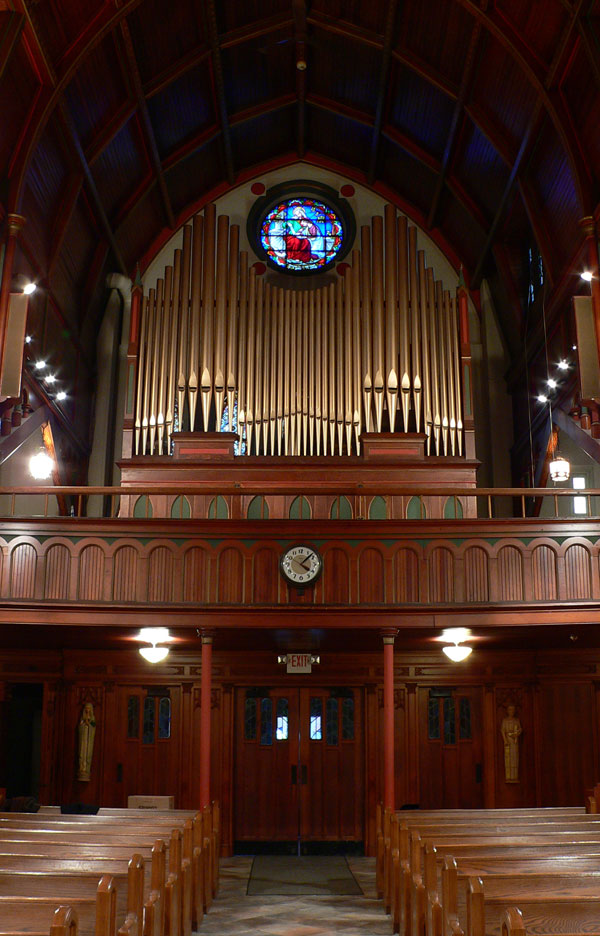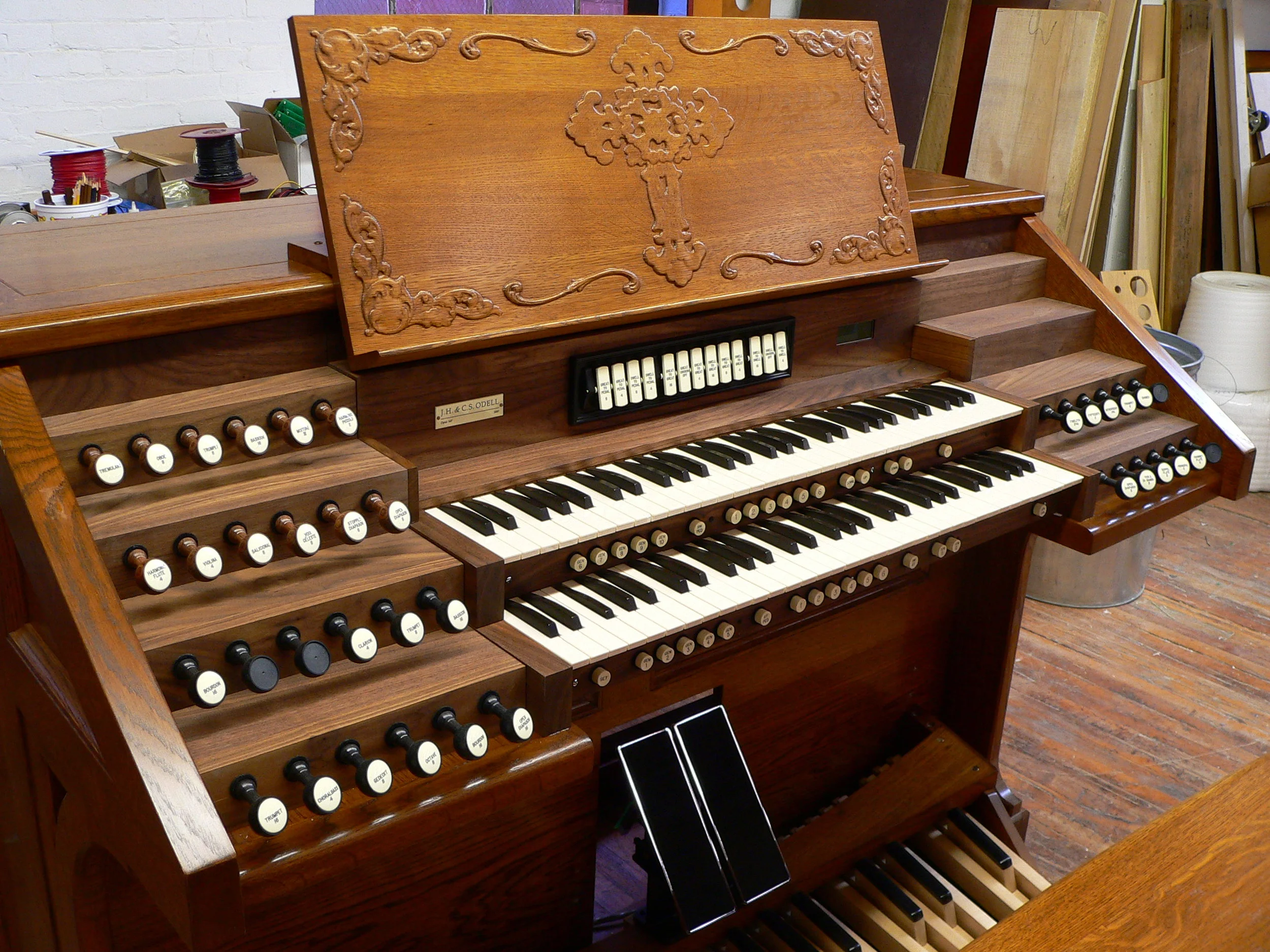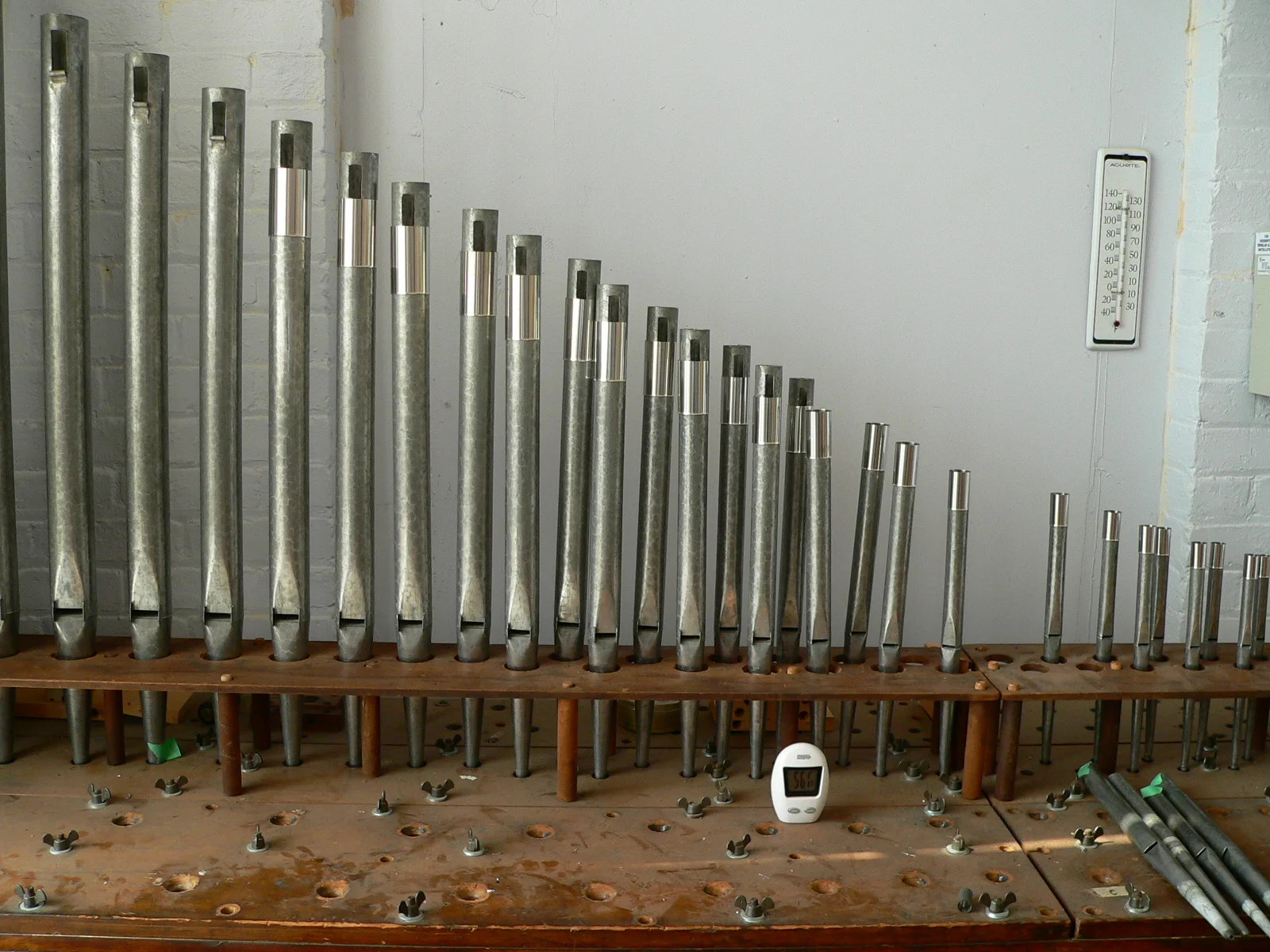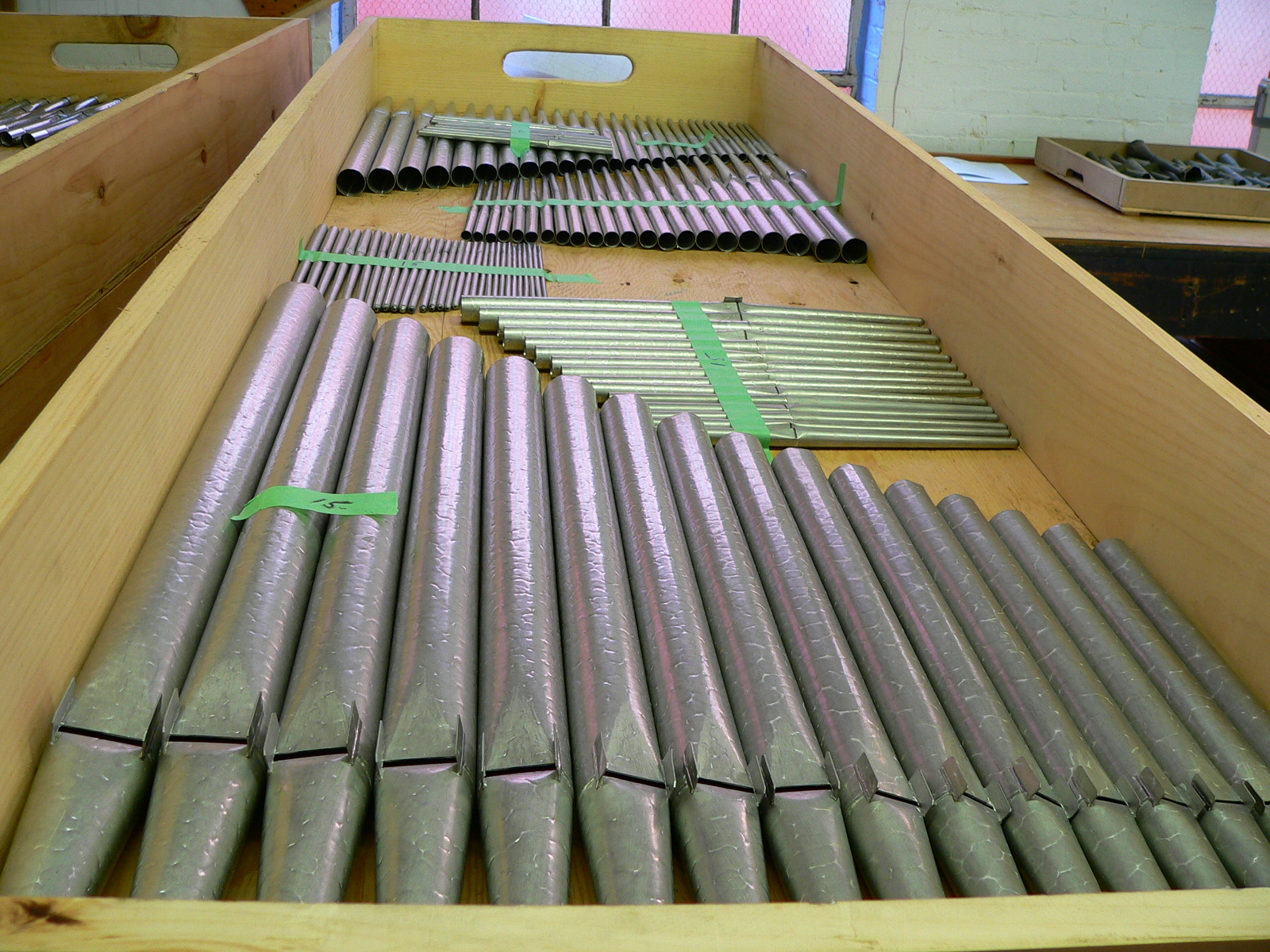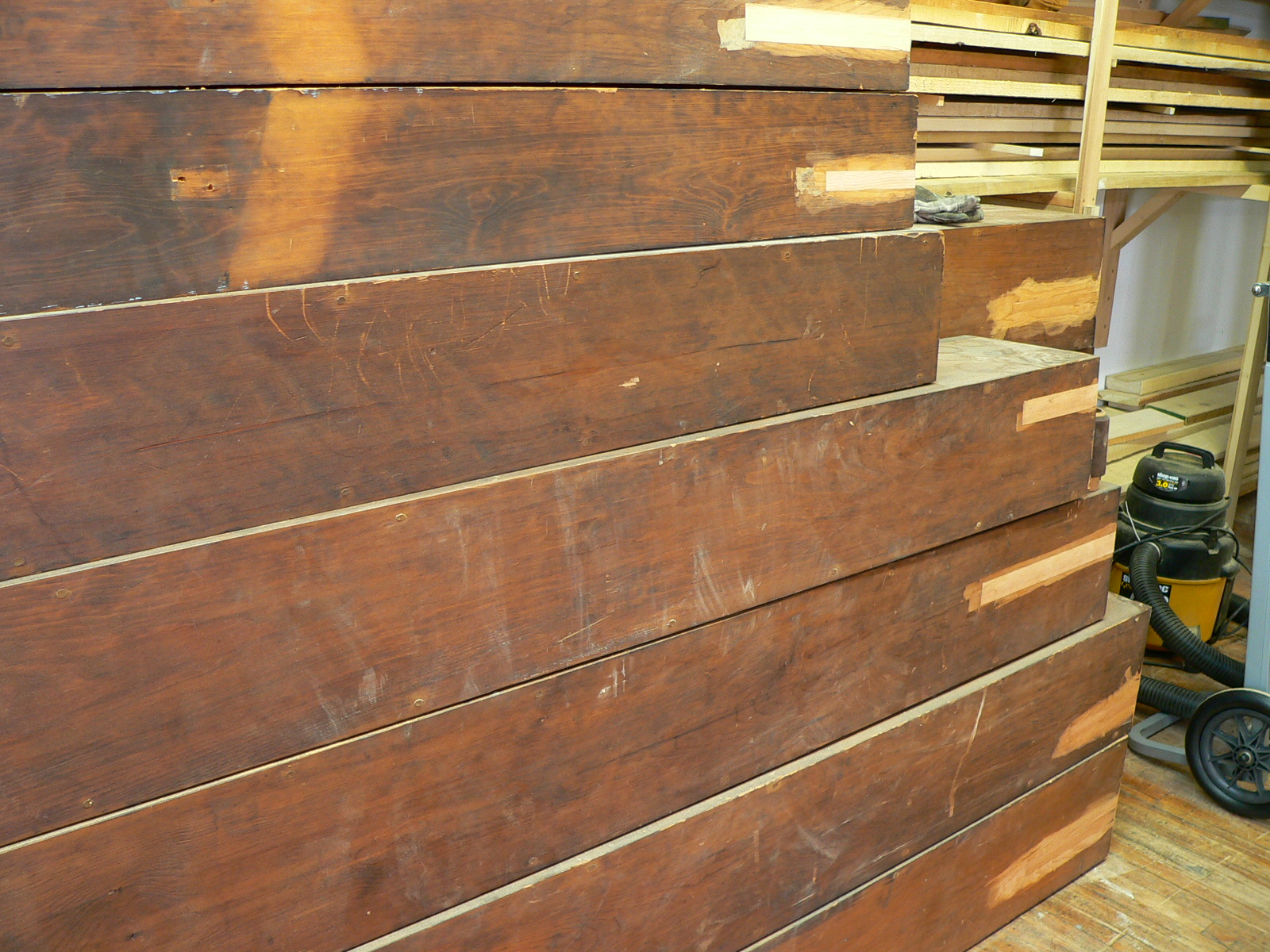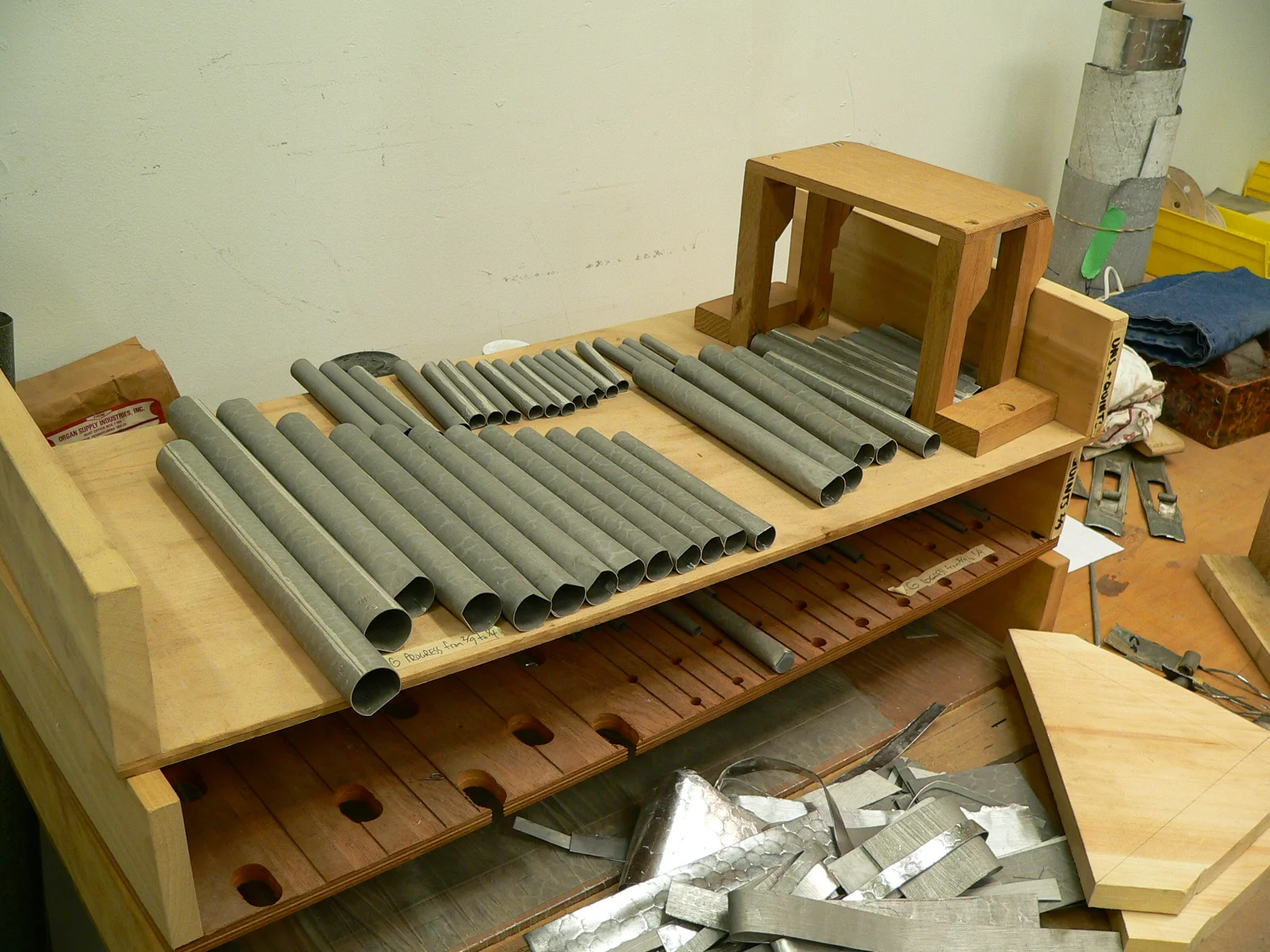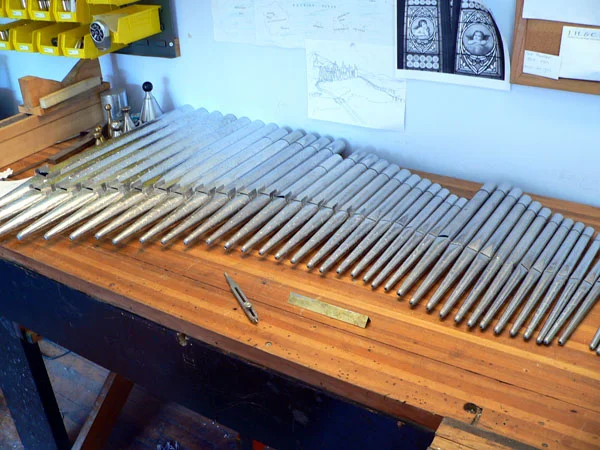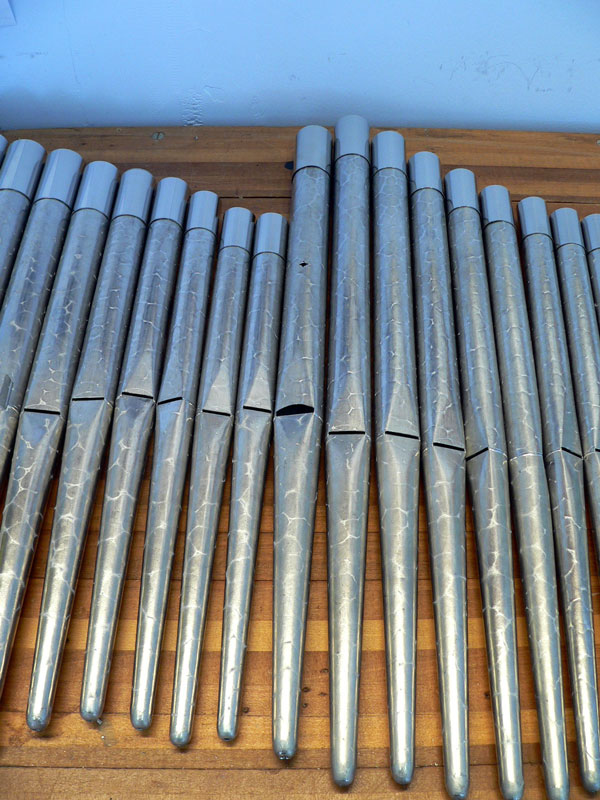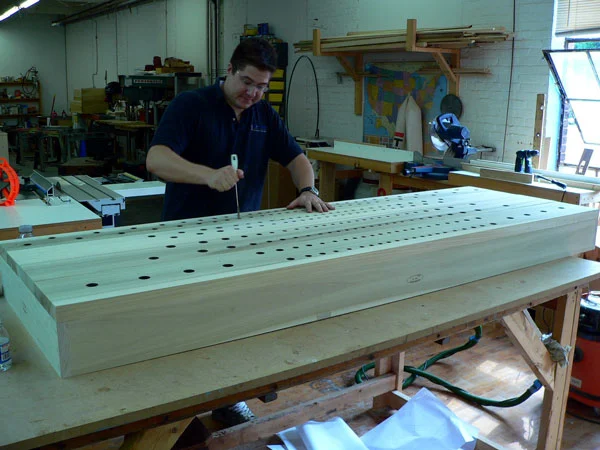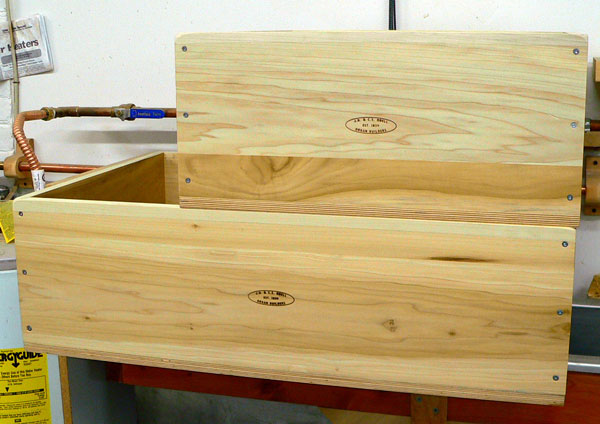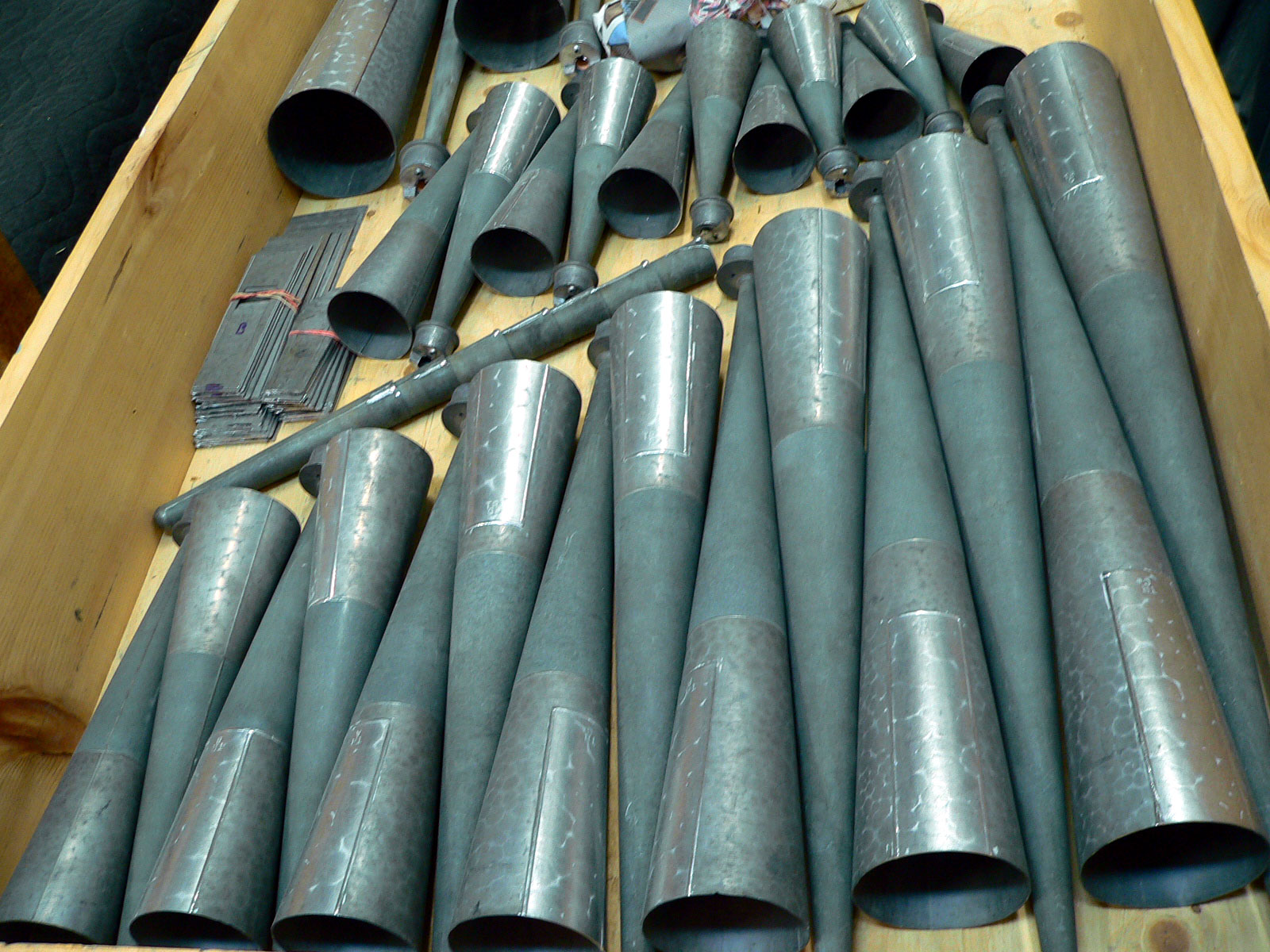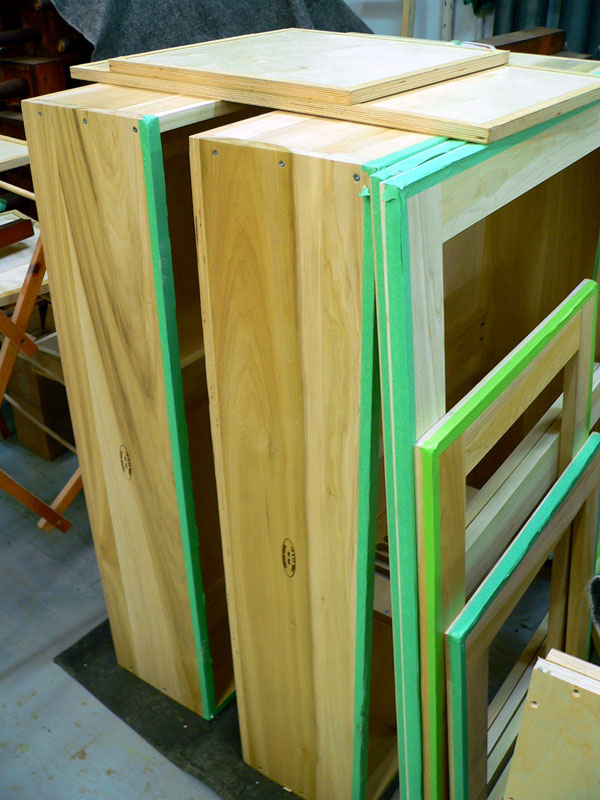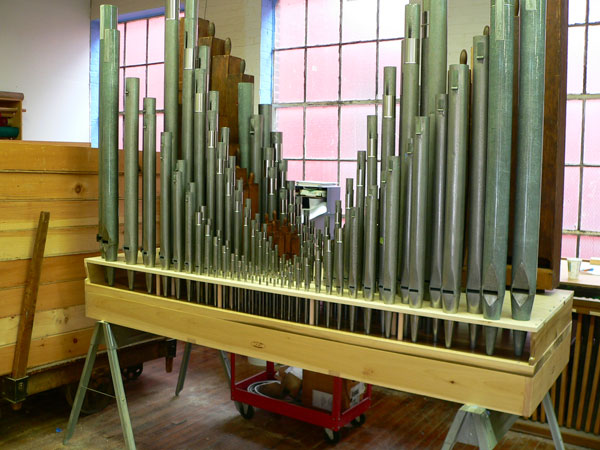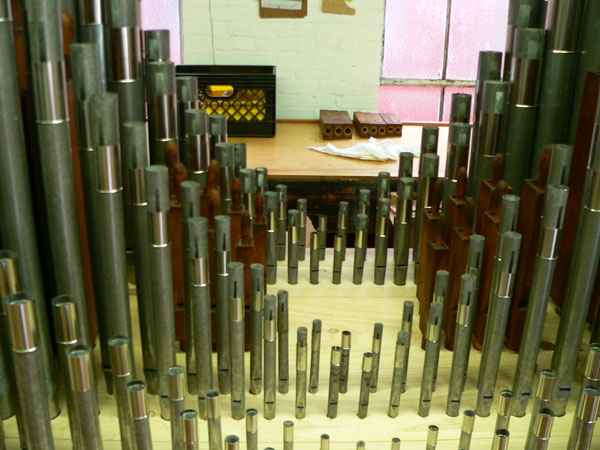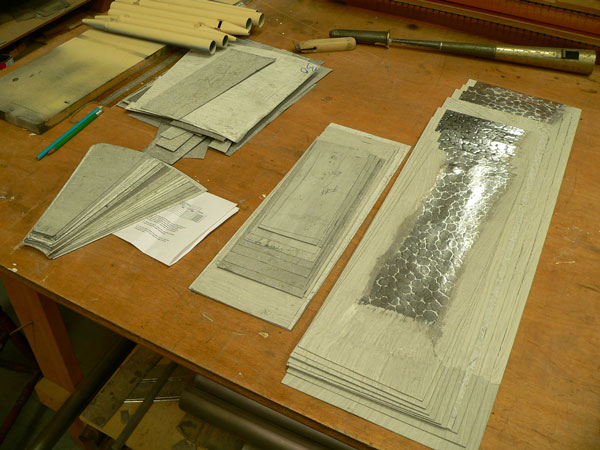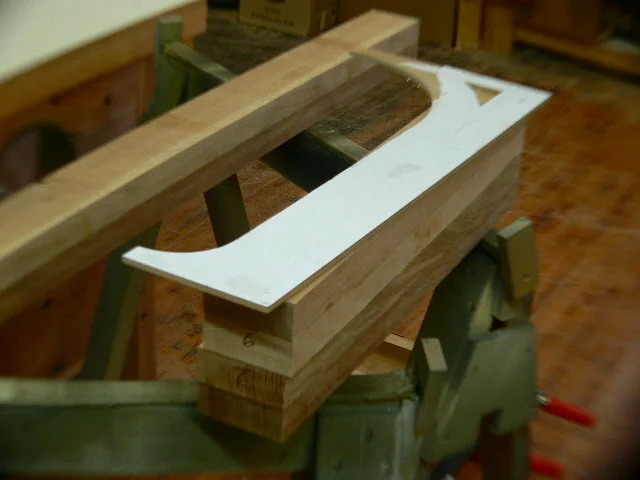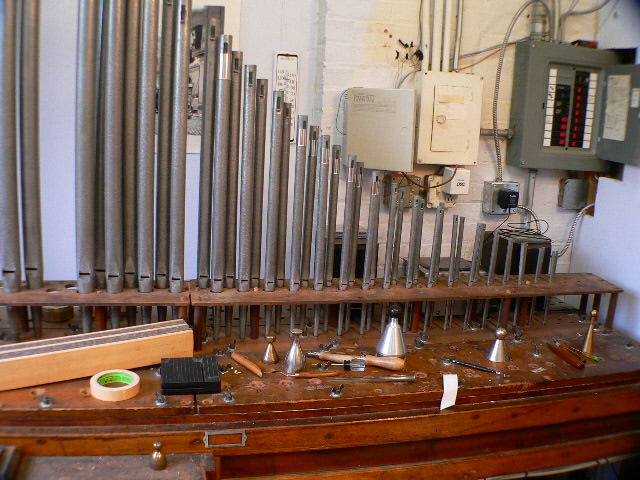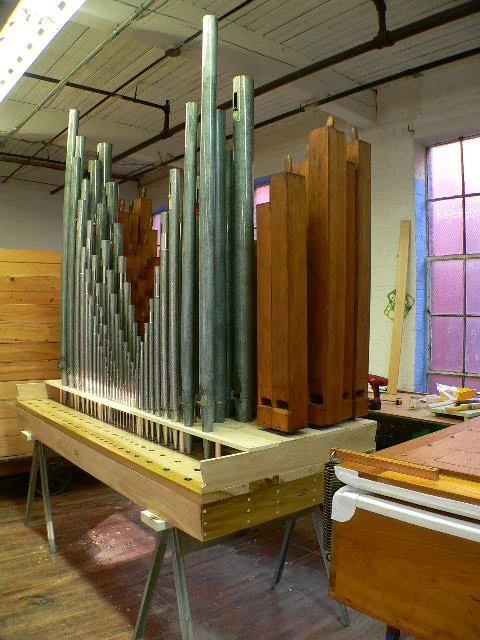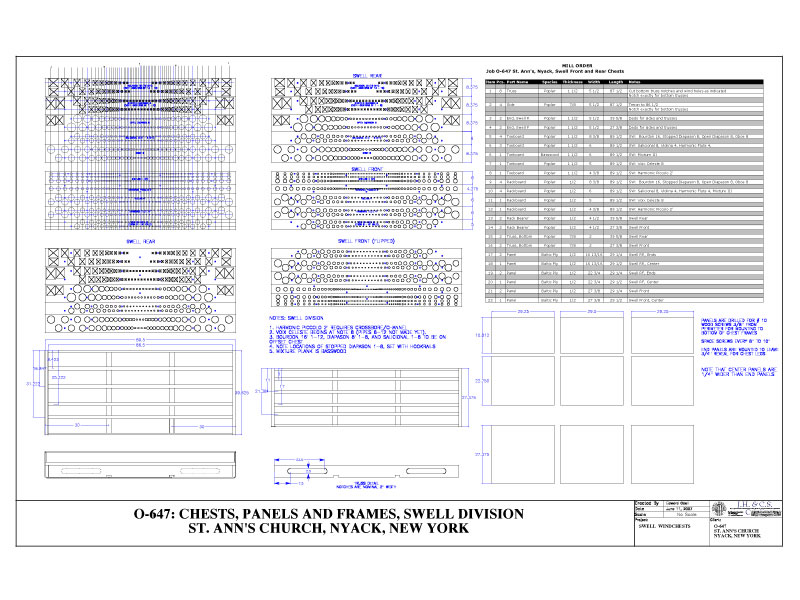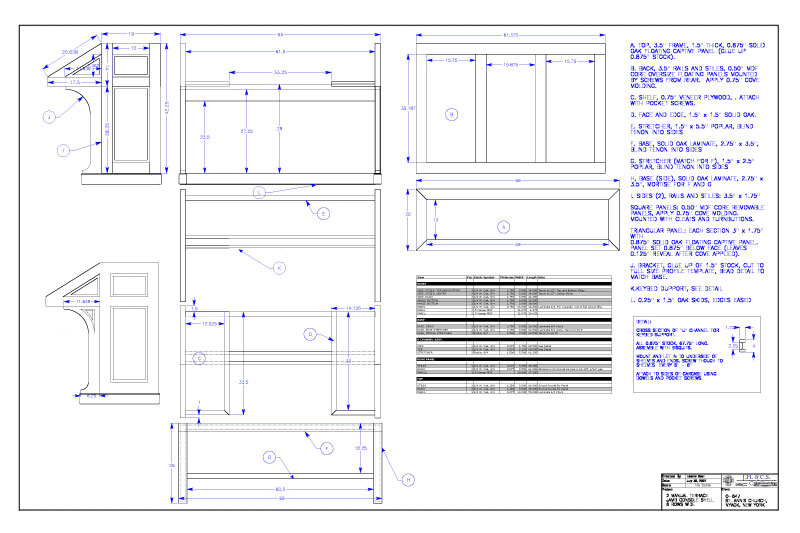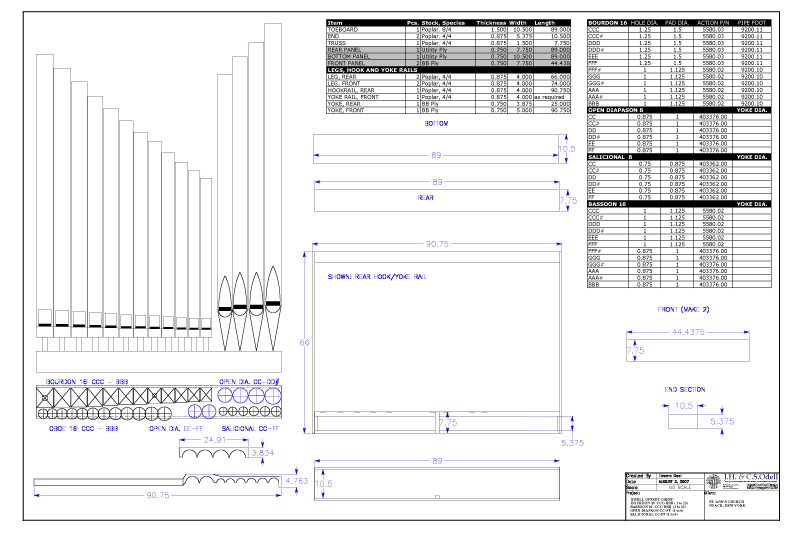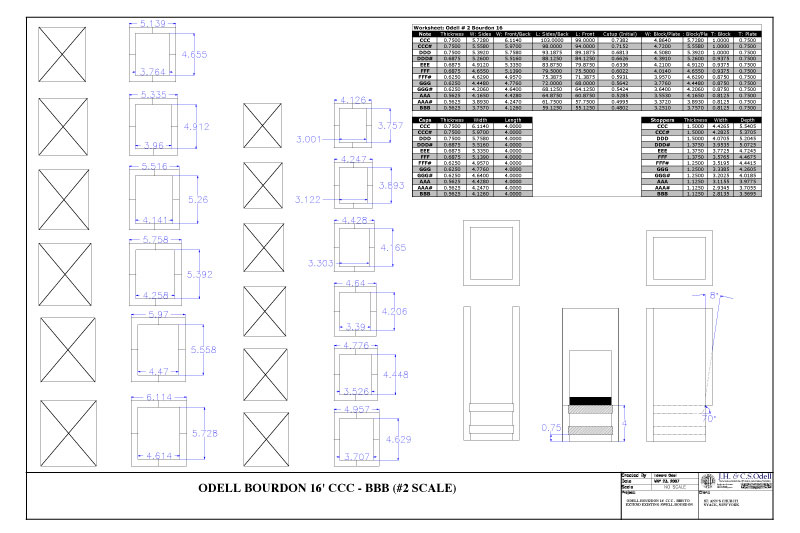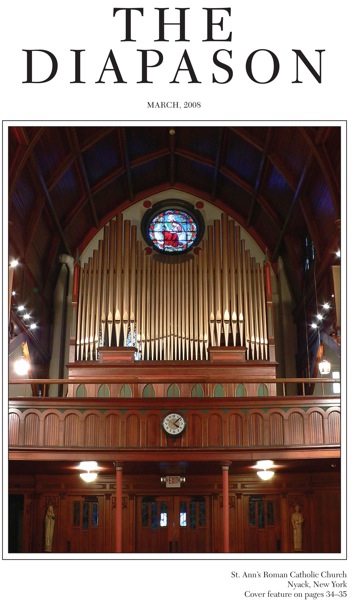The picturesque village of Nyack is situated on the western bank of the Hudson, less than 20 miles north of Manhattan. Home to 19th-century realist painter Edward Hopper, the village was perhaps better known for its sandstone quarry and as a locus of shipbuilding. These industries declined after 1900, though there was renewed shipbuilding activity during the world wars, with submarine chasers being built there as late as 1948. In the postwar years, the completion of the Tappan Zee Bridge contributed to significant growth in population and commerce. The village underwent a major urban revitalization project to commercialize the downtown area and to expand its economy in the 1980s; today the village center is home to many new business establishments.
I took note of this downtown revitalization when I first visited St. Ann’s Church on a warm spring day in 2006. I had been contacted by Jennifer Pascual in her capacity as chair of the organ committee for the New York Archdiocesan Music Commission. Several weeks prior, Dr. Pascual had asked that I meet with the staff of St. Ann’s, survey the organ, and make recommendations.
On entering the building, to my delight I discovered a well-appointed church sanctuary with terrazzo floors, high ceiling, and best of all, an organ located in the gallery on the central axis. Finally a room that we could work with instead of against! I quickly set about my work, dutifully examining the pipe organ.
Little is known about the life and work of Francis John Newton Tallman, a builder who, according to Fox [David A. Fox, A Guide to North American Organbuilders], based his operations (serendipitously for St. Ann’s) in Nyack from roughly 1894 to 1903, and it is during this period that the organ for St. Ann’s was built. In addition to his organ factory, Tallman also maintained a music store in Nyack village. Prior to life in Nyack, Tallman was employed by the Roosevelt firm, and when he left Nyack in 1904 he reportedly relocated to Brooklyn to work with Reuben Midmer.
The organ Tollman built for St. Ann’s was originally a two-manual instrument with mechanical action, and of his surviving instruments, St. Ann’s was purportedly among the largest. There was evidence that the original keydesk was situated en fenêtre; the panel that replaced the keydesk’s entry point into the case was without the lancet molding treatment found in the rest of the case, as well as being from an entirely different species of wood. The interior layout of the organ suggested a backfall action had been employed for the Great, with squares and trackers for the Swell. The Pedal was divided, on ventil chests.
In the 1930s, the organ’s action and winding system were removed by local service people as part of the process of introducing the organ to the benefits of electricity. Pneumatic pulldown systems were connected to the slider chests, with a similar arrangement for the Pedal, though the ventil system was retained. The organ continued this way until the 1960s, when a supply house console was installed by well-known New York organ man Louis Mohr (also a former Roosevelt employee). Thereafter some minor changes were made to the specification, but otherwise the original pipework survived intact. Apart from decay and neglect, most damage to the metal flues was from “aggressive” cone tuning. Even with the mechanical alterations, tuning access was difficult. When I inspected the organ, most of it, save for a portion of the Great, was inoperable.
As we often restore 19th-century pipework, there were few surprises. Scaling and voicing of flue pipes were very much in line with our own 19th-century practices. While restoration and remedial voicing work were certainly required, in general workmanship we saw little to improve upon. From a modern tonal standpoint, the only serious deficits were in the Swell, which lacked an Oboe and an undulating rank of any variety. Certain ranks - such as the Swell Diapason 8’, Salicional 8’, and Bourdon 16’ - omitted bottom octaves as was often the custom with smaller instruments of this vintage. The Pedal division was spare, but the basics were in evidence, with a suitably scaled Open Wood and Bourdon.
Mechanically, things were far less clear-cut. The collection of cone-valve style regulators that replaced the original winding system were arranged in a way that frustrated access to the mechanism. They were also not terribly well built. The slider chests and the pulldown systems installed were all in very bad shape. Both manual chests had runs and frozen sliders. With so many changes of questionable provenance, we felt it was best to save the case and pipes and start over. With this as a departure point, the members of the Archdiocesan Organ Committee requested we consider some additions. The possibility of the use of digital voices was discussed, though we made clear our preference for a pipe-only design, concentrating instead on filling out a more conservative two-manual specification rather than stretching the limits for a three. Our proposal was accepted, and design work commenced in the fall of 2006.
The mechanical design of the organ is entirely new from the ground up: new conventional wind reservoirs and windchests, all of our own design and construction. We designed and built a new Swell enclosure to accommodate our additions to the division. We also constructed a new two-manual console using our popular terrace-jamb design in quarter-sawn white oak, incorporating a solid state capture and control system with our standard complement of accessories and relief carving for the music desk.
The Great division of the organ is unchanged but for the addition of a principal-scaled Seventeenth to fill out the chorus. In the Swell, the Bourdon 16’ has been made full compass with a bottom octave built and scaled in our shop to precisely match its 8’ octave. The Diapason 8, which originally shared a stopped bass, now has its own bottom octave. Other additions to the Swell include an entirely new Oboe (available at 16’ and 8’), a GG-compass Celeste, a new 2’ Flute and Mixture III based on 2’ pitch. Additions to the Pedal include extending the Great Trumpet with a new 16’ octave and a fully independent Principal 8’.
Members of our staff who contributed to this project include: Edward Odell (mechanical design, console, tonal finishing), shop foreman John Williams (windchests, reservoirs, pipesetting, electrical), Curt Goettlich (finishing, wooden pipe fabrication, cabinet work, expression enclosure), Stewart Skates (metal pipemaking and repair), and Tristan Bowen, with assistance from Richard Hamar and William Harper.
We are grateful to the Archdiocesan Music and Building Commission, as well as the staff of St. Ann’s Church, especially Father Robert Henry and Director of Music George Bryant, for the opportunity to create something of lasting musical beauty for this parish.
Odell opus 647, II/25, St. Ann's Catholic Church, Nyack
Click for Stoplist: Odell opus 647
Console at our shop prior to delivery
“We are grateful to the Archdiocesan Music and Building Commission, as well as the staff of St. Ann’s Church, especially Father Robert Henry and Director of Music George Bryant, for the opportunity to create something of lasting musical beauty for this parish.”
